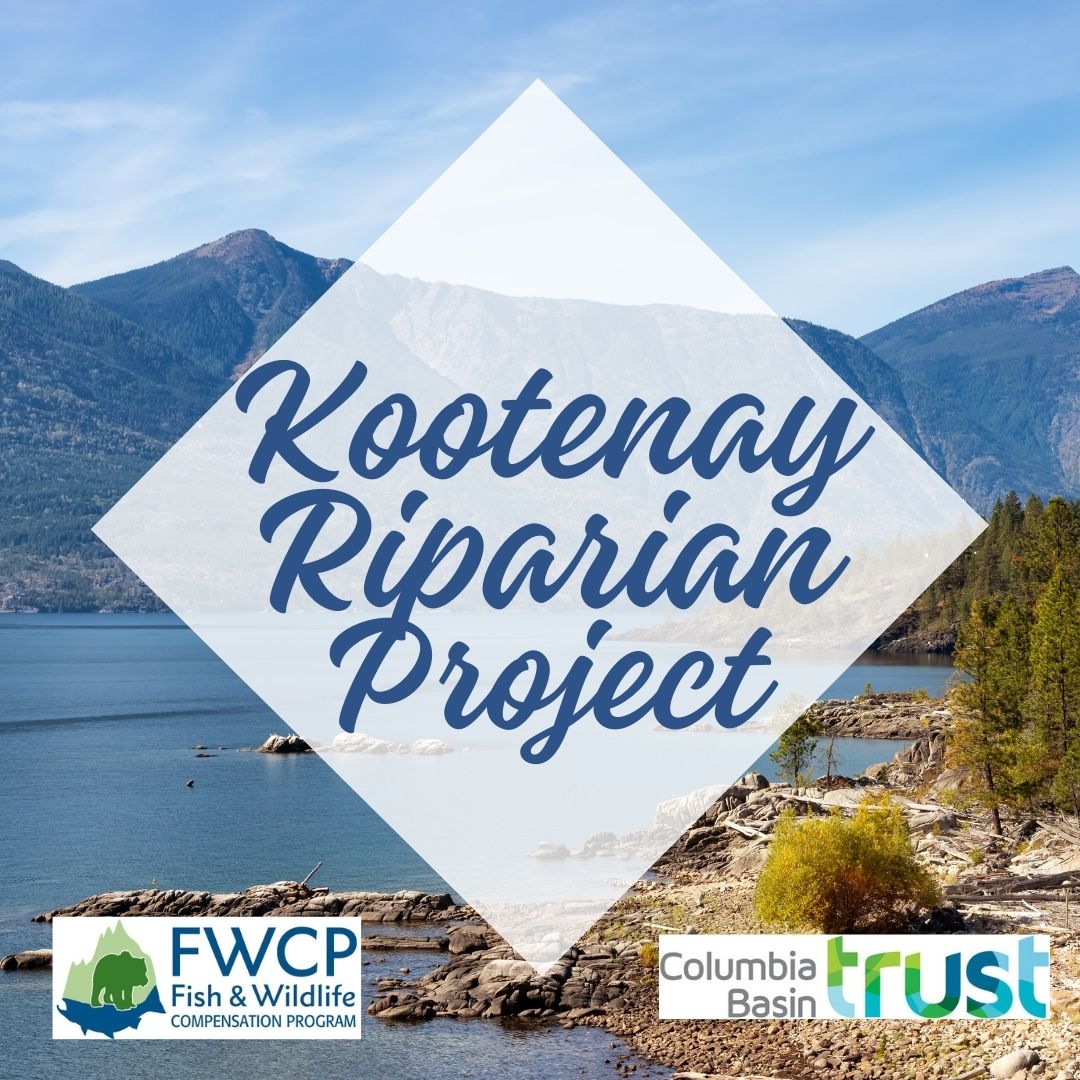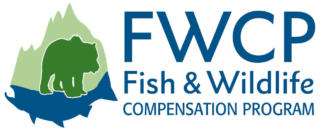During the 2023 field season the CKISS team was out on the waters of Kootenay Lake conducting surveys for invasive purple loosestrife and yellow flag iris, as well as some riparian restoration. Things went swimmingly with some help from our friends at the Okanagan Nation Alliance, Nature Trust of BC, and Morrow BioScience! The crew even found some bio-control agents!

Throughout the months of July and August 2023, The CKISS field crew surveyed 278542m2 of riparian habitat for yellow flag iris (L. salicaria) and purple loosestrife (I. pseudacorus) along the West arm of Kootenay Lake. The crew identified 7580m2 of land which had been mechanically treated in previous years, no longer had Yellow Iris or Purple Loosestrife present. Yip yeah!
The CKISS field crew collaborated with our partners listed above, to mechanically treat yellow flag iris and purple loosestrife across 3741m2 and 1007m2, respectively. Within these total areas, the CKISS field crew removed 513m2 of yellow flag iris and 126m2 of purple loosestrife. The field crew transported 2705kg of invasive plant material from the riparian sites and had it buried at the landfill.
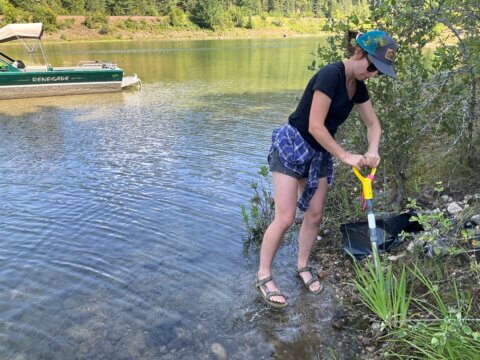
Biocontrol surveys were conducted at 25 sites to determine if the purple loosestrife biocontrol agent, the black-margined loosestrife beetle (Galerucella calmariensis), was present. Biocontrol agents were detected at four of these 25 sites. One site was particularly exciting because the field crew found many adult agents and larvae, along with extensive foliar feeding damage on the plants. This site was identified as an optimal location for future biocontrol collection.

Following the suggestions put forth by the ecological restoration consultant in 2022, four sites received replacement planting with native plants. The CKISS field crew and staff from the Okanagan Nation Alliance planted the native plants in areas of significant disturbance following mechanical control of both yellow flag iris and purple loosestrife. Overall, the crew planted 3 Bebb’s willows, 2 red osier dogwood shrubs, 2 mountain alders, 6 nootka rose shrubs, and 136 carex spp. sedges.
Fall plans
Staff from the Okanagan Nation Alliance continue to mechanically control yellow flag iris at Bird Creek Marsh this fall. A private contractor will survey and mechanically treat 15 existing sites around Nelson which are accessible by road and canoe. The remaining 11 native shrubs will be planted at Bird Creek Marsh to restore areas affected by the mechanical control efforts. Browse protection will be installed around the native shrubs to protect them from beaver activity.
Next Year Priorities
On-going mechanical control of Yellow Iris at Bird Creek Marsh is recommended. This site has a significant infestation which has grown from last year. Similarly, a site which is located just past the Taghum bridge, has an extensive yellow iris infestation which would benefit from more field crew members and allocated hours. Field crew members observed purple loosestrife spreading to new sites around Grohman Narrows, specifically through-out the islands. More time to survey these areas, as well as collection and release of biocontrol agents should be planned for next year.
Invasive purple loosestrife & yellow flag iris in the Kootenays, what you need to know:
ID – Tall flowering perennial plant, common along stream and river banks and shallow ponds. Flowers have 5-7 purple petals arranged along vertical spikes at the top of stems. Stems are woody at the base and grow between 0.5-2m tall. The stems are squared, so the corners can be felt when it is rolled between finger and thumb.
Impacts – Can block water flow in canals and ditches used for agriculture and reduce forage value. Holds little food value, cover and nesting material for animals. A Highly competitive plant that can dominate in aquatic plant communities. Produces up to 2.5 million seeds per plant and can reproduce through its rhizomatous root system.
Management – As always prevention is a key part about invasive species management. Avoid putting purple loosestrife into any garden areas and remove plant parts and seeds from personal gear before leaving an infested area. Small infestations can be removed through hand pulling and digging.
Removal – Tarp and bag removed plants, plant parts and seeds before transporting to a designated disposal site. If this is not possible, plants can be pulled and piled away from the water. Allow them to dry and burn if possible.
Have you spotted purple loosestrife in the West Kootenay region? Report it here
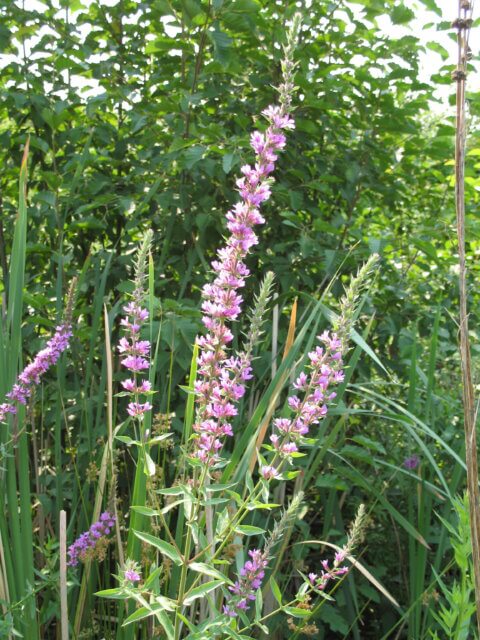
Yellow flag iris (YFI) is an invasive plant native to Europe, Western Asia, North Africa and the Mediterranean. It forms dense stands, out-competing native wetland plants and reducing habitat and resources available for wildlife. It is easily identifiable when in bloom with its large yellow iris flowers. Its seed pods are large and green, resembling jalepeno peppers. Its leaves can grow over 6ft tall and are sword-like, tapering to a point with a single well-defined rib running through the centre.
YFI is a powerful invader, able to reproduce via seeds and rhizome fragments (small pieces of root) that can float downstream to populate new areas of a waterway. If you are removing a population be very careful to remove all of the plant and double bag it in clear plastic bags to be disposed of at a transfer station.
To report a sighting of YFI, Report it here.
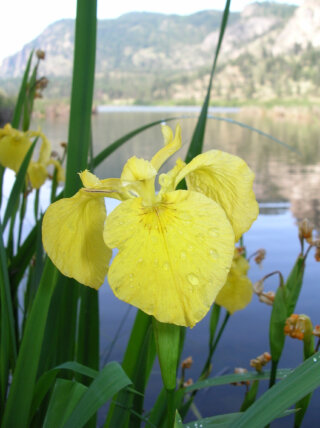
Kootenay Riparian Project Funders
- Kootenay Riparian Invasive Plant Control was managed and delivered with financial support from the Fish and Wildlife Compensation Program. www.fwcp.ca. This Project is funded by the Fish and Wildlife Compensation Program (FWCP). The FWCP is partnership between BC Hydro, the Province of B.C., Fisheries and Oceans Canada, First Nations and public stakeholders to conserve and enhance fish and wildlife in watersheds impacted by BC Hydro dams.

- Additional support for the Kootenay Riparian has been provided by Columbia Basin Trust, Columbia Power, FortisBC and Teck.

